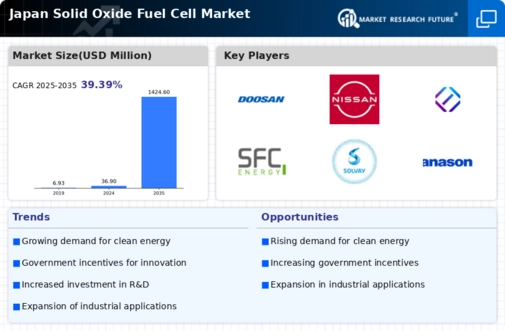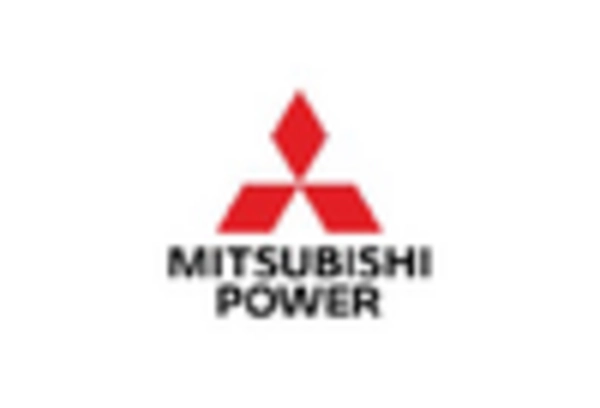Rising Energy Costs
The solid oxide-fuel-cell market in Japan is experiencing a notable surge due to the increasing costs of traditional energy sources. As fossil fuel prices fluctuate, consumers and industries are seeking alternative energy solutions that offer stability and cost-effectiveness. Solid oxide fuel cells, with their high efficiency and low emissions, present a viable option. The market is projected to grow as businesses and households look to mitigate energy expenses. In 2025, the average energy cost in Japan is expected to rise by approximately 10%, prompting a shift towards more sustainable energy technologies. This trend indicates a growing acceptance of solid oxide fuel cells as a reliable energy source, potentially leading to a market expansion of over 15% in the coming years.
Environmental Regulations
Japan's stringent environmental regulations are significantly influencing the solid oxide-fuel-cell market. The government has implemented various policies aimed at reducing greenhouse gas emissions and promoting cleaner energy technologies. As industries strive to comply with these regulations, the demand for solid oxide fuel cells is likely to increase. The market is expected to witness a growth rate of around 12% annually as companies invest in cleaner technologies to meet regulatory standards. Furthermore, the push for carbon neutrality by 2050 is driving innovation and adoption of solid oxide fuel cells, positioning them as a key player in Japan's energy transition. This regulatory environment creates a favorable landscape for the solid oxide-fuel-cell market to thrive.
Growing Industrial Applications
The solid oxide-fuel-cell market is witnessing a rise in demand from various industrial sectors in Japan. Industries such as manufacturing, transportation, and data centers are increasingly adopting solid oxide fuel cells for their energy needs. The ability of these fuel cells to provide reliable and efficient power solutions aligns with the operational requirements of energy-intensive industries. In 2025, it is estimated that industrial applications will account for approximately 30% of the total market share. This trend suggests a robust growth trajectory for the solid oxide-fuel-cell market, as industries seek to enhance energy efficiency and reduce their carbon footprint. The integration of solid oxide fuel cells into industrial processes is likely to drive innovation and further market expansion.
Public Awareness and Acceptance
Public awareness regarding the benefits of clean energy technologies is growing in Japan, positively impacting the solid oxide-fuel-cell market. As citizens become more informed about environmental issues and the importance of sustainable energy solutions, there is a noticeable shift in consumer preferences. This heightened awareness is likely to lead to increased demand for solid oxide fuel cells, as individuals and businesses seek to adopt greener technologies. Surveys indicate that over 60% of the population supports the transition to renewable energy sources, which bodes well for the market's future. The solid oxide-fuel-cell market is expected to capitalize on this trend, potentially achieving a growth rate of 10% as public acceptance continues to rise.
Technological Advancements in Fuel Cells
Technological advancements are playing a crucial role in shaping the solid oxide-fuel-cell market in Japan. Innovations in materials and manufacturing processes are enhancing the efficiency and durability of fuel cells, making them more attractive for commercial and residential applications. For instance, recent developments in electrolyte materials have improved performance at lower temperatures, expanding the operational range of solid oxide fuel cells. This progress is likely to drive market growth, with projections indicating a potential increase of 20% in adoption rates by 2027. As technology continues to evolve, the solid oxide-fuel-cell market is expected to benefit from increased investment in research and development, further solidifying its position in the energy sector.

















Leave a Comment